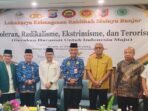Visiting Banjarmasin City, South Kalimantan is incomplete if you haven’t tried the various culinary specialties of the city which is nicknamed ‘the city of a thousand rivers’. Because the typical food of the South Kalimantan region is unique, from the use of ingredients for cooking to the way it is served.
Here are some typical foods from South Kalimantan that have unique flavors and names that would be a shame if you don’t try them.
Soto Banjar
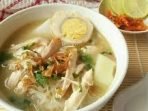
A typical food from the South Kalimantan region that is quite popular is Soto Banjar. The level of popularity of this food is evident from the many food stalls that provide Soto Banjar. Even though it can be enjoyed outside South Kalimantan, it doesn’t hurt to taste Soto Banjar with the real taste in its original city, namely Banjarmasin.
Soto Banjar has a different presentation from soto in other cities. The difference is the amount of filling available in one serving of the bowl. The contents in a bowl of Soto Banjar are not only rice vermicelli and shredded chicken. But there are also boiled eggs and a sprinkling of fried onions.
Interestingly, the use of chicken in Soto Banjar is free-range chicken. In addition, in a bowl of Soto Banjar, there are potato cakes. Its uniqueness is that Soto is generally served with white rice, which is different from the serving of Soto Banjar which uses lontong or ketupat.
Ketupat Kandangan
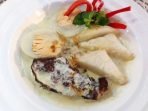
The next typical South Kalimantan food that you must try when visiting one of the cities here is Ketupat Kandangan. This special food is quite famous for those who live in South Kalimantan and its surroundings. The name of this food comes from an area in South Kalimantan, namely Kandangan.
The main ingredient for a serving of this dish is rice. Later, the rice will be made into ketupat which has a tougher texture compared to other diamonds that have been encountered. The ketupat is then served together with a slightly cloudy sauce, due to the use of coconut milk in the mixture to add flavor.
Well, for side dishes this food is usually served with haruan fish or snakehead fish. The technique for processing this fish is not fried, but cooked directly with the coconut milk sauce. For those of you who are visiting South Kalimantan, it is mandatory to try special dishes with this unique taste.
Manday
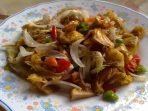
If you know cempedak (looks like jackfruit), this is the main ingredient used in making this typical South Kalimantan food. The part of the cempedak used is the skin, or the people of South Kalimantan usually call it tiwadak. Before this cempedak skin can be consumed deliciously, the previous cempedak skin is preserved for a long time.
The way to preserve cempedak skin is quite simple. Only cempedak skin and salt are needed, which are then mixed and put in a tightly closed container. The preservation time duration is adjusted to the taste of each maker. However, the longer you let it sit, the better it will be.
For serving, the preserved cempedak skin is usually fried. But there are also other ways to enjoy it by burning or even steaming it. You can add some spices when you want to serve it as a curry.
Gangan Asam Banjar

Gangan Asam Banjar is one of the specialties of the South Kalimantan region which is usually used as a home cooking. However, because they feel that this food is unique, many local people sell this food in several local restaurants.
Gangan in South Kalimantan means vegetable. When combined, it is an sour vegetable. However, this tamarind vegetable in the South Kalimantan area is different from the tamarind sauce that you are used to tasting.
This typical tamarind vegetable in South Kalimantan has a yellow color in the broth, which is produced from turmeric. As an additional side dish, gangan tamarind is often added with haruan fish, snakehead fish, and catfish.
Iwak Samu
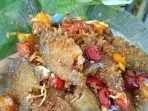
The typical food of the South Kalimantan region with a unique taste and presentation is iwak (fish) samu or iwak basamu. Samu in the Banjarese is a process of salting fish seasoned with salt, turmeric, and rice which is roasted and then ground coarsely.
Fish that are commonly chosen for salting are snakehead, sepat, saluang, and papuyu fish. This fish preservation process will be carried out for some time, according to taste. After the fish has been preserved, usually the fish can be fried immediately without adding any other spices.
Anang Fadhilah








